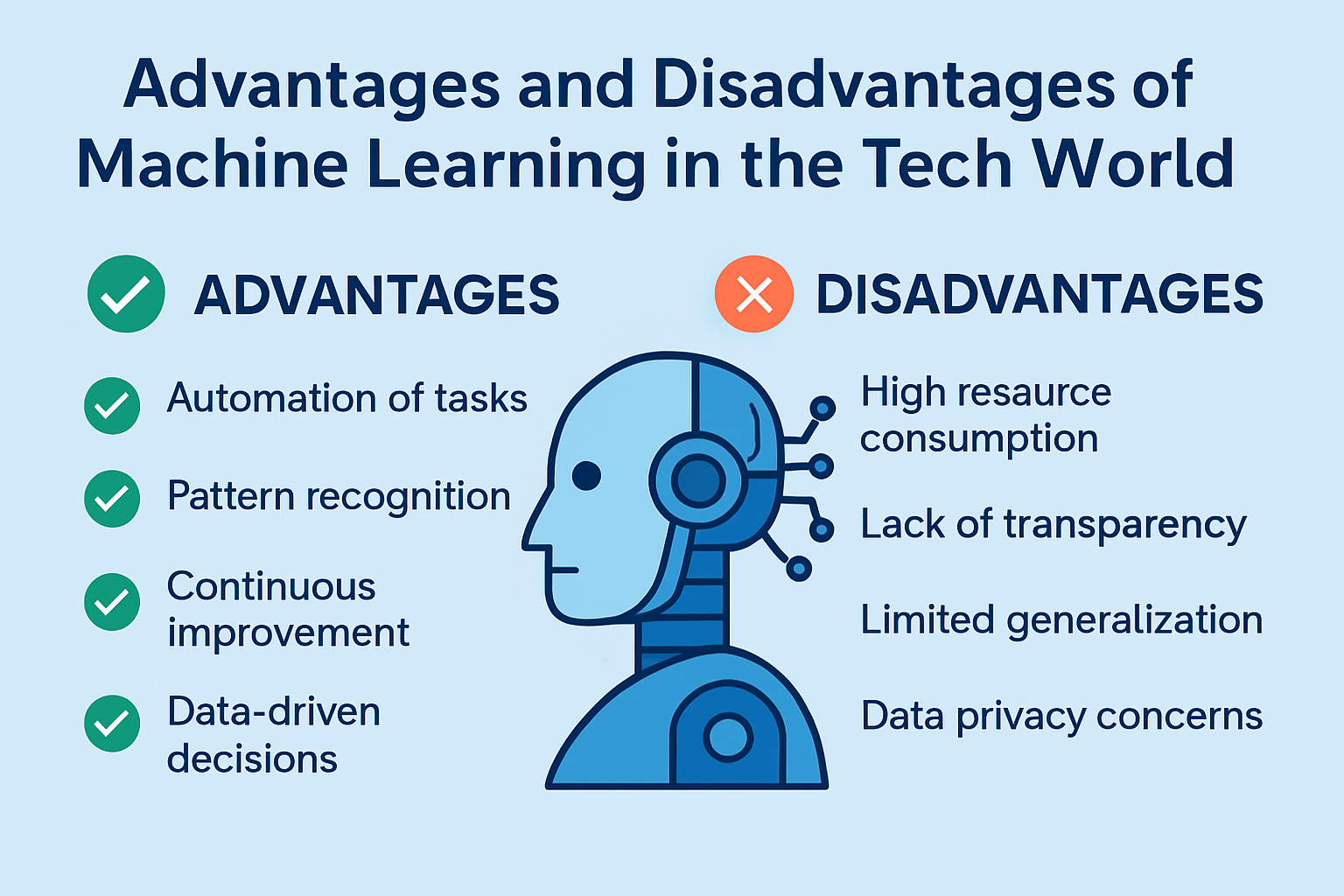Machine Learning (ML) has rapidly evolved from a niche research area into a cornerstone of modern technology. From personalized recommendations on streaming platforms to real-time fraud detection in banking, ML is transforming how we interact with digital systems. However, like any disruptive technology, it comes with both strengths and limitations. In this blog, we explore the advantages and disadvantages of machine learning, focusing on its technological implications.
Advantages of Machine Learning
1. Automation of Tasks
One of the most impactful advantages of machine learning is its ability to automate repetitive and complex tasks without human intervention. In areas like predictive maintenance, customer service chatbots, and data classification, ML drastically reduces manual effort and error rates.
2. Data-Driven Decision Making
Machine learning models excel at analyzing vast amounts of data and uncovering patterns that are impossible to detect manually. Businesses and tech platforms can make faster and more accurate decisions, improving efficiency across operations.
3. Continuous Improvement
Unlike static systems, ML models learn and improve over time as more data becomes available. This ability ensures better accuracy and adaptability in dynamic environments, such as algorithmic trading or autonomous vehicles.
4. Personalization at Scale
ML enables real-time personalization of content, services, and user experiences. For instance, platforms like Netflix, Amazon, and Spotify use ML algorithms to tailor recommendations based on user behavior and preferences.
5. Wide Range of Applications
From natural language processing (NLP) to computer vision, ML is powering innovations in numerous tech domains like healthcare (predictive diagnostics), cybersecurity (threat detection), and IoT (smart devices).
Disadvantages of Machine Learning
1. Data Dependency
One of the major disadvantages of machine learning is its reliance on quality data. Poor, biased, or insufficient data can lead to inaccurate predictions and potentially harmful outcomes.
2. Lack of Interpretability
Many ML models, especially deep learning networks, are black boxes it’s difficult to explain why they made a particular decision. This lack of transparency raises concerns in high-stakes areas like healthcare and legal tech.
3. Overfitting and Underfitting
ML models are prone to overfitting (memorizing training data too well) or underfitting (failing to learn from data), which affects their performance in real-world scenarios.
4. Computational Costs
Training complex ML models requires high-performance computing resources, which can be costly in terms of hardware, energy, and time. This limits accessibility for small tech firms and startups.
5. Security and Privacy Risks
ML systems can be vulnerable to adversarial attacks, data leaks, and privacy issues, especially when handling sensitive personal or enterprise data.
Final Thoughts
The advantages of machine learning are transforming the tech landscape, driving innovation in automation, analytics, and intelligent systems. However, to fully harness its potential, we must also address the disadvantages of machine learning particularly around data ethics, model transparency, and infrastructure requirements.








